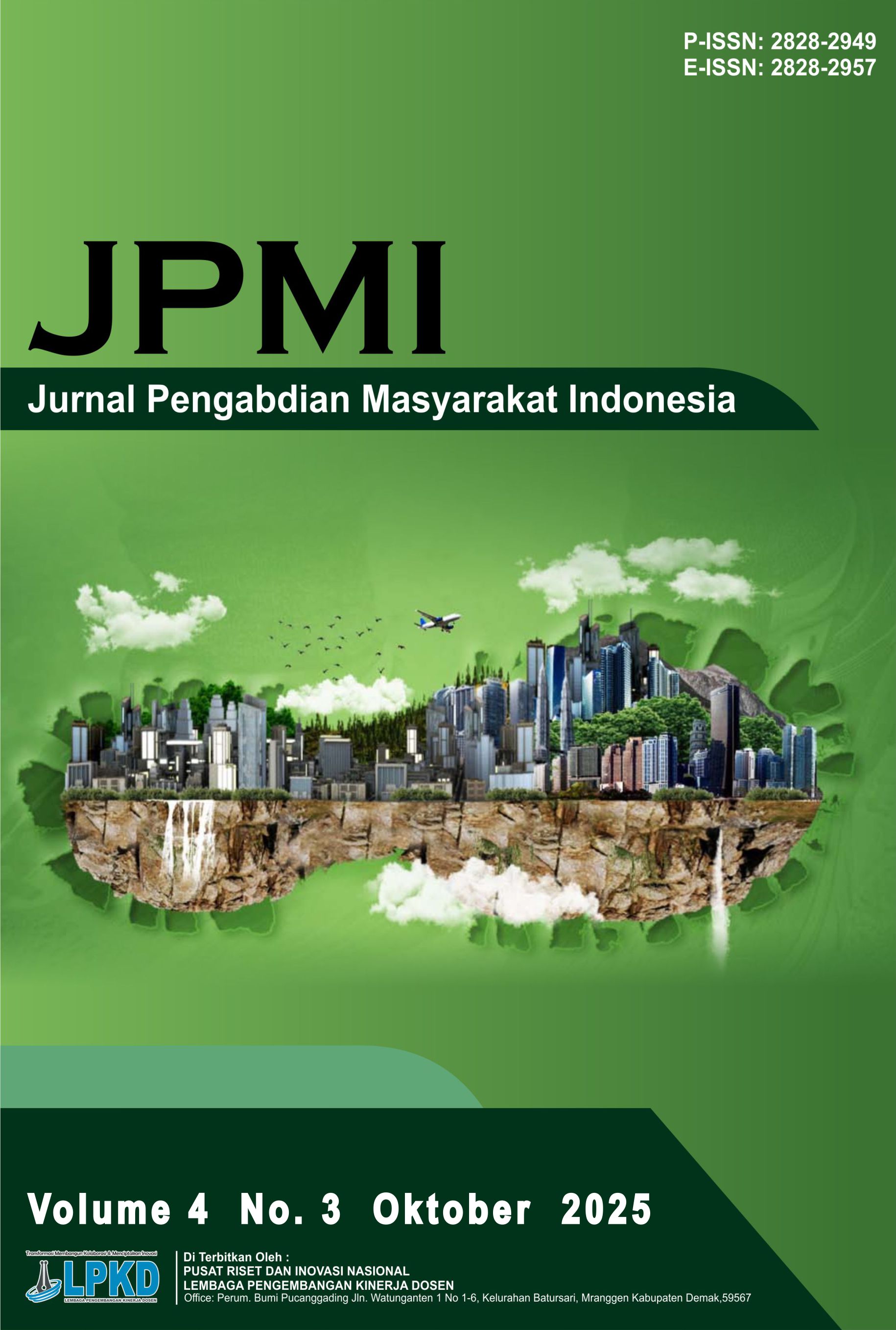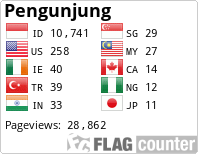Pemanfaatan Limbah Jerami Menjadi Produk Briket Demi Meningkatkan Perekonomian Masyarakat di Desa Tanjung Qencono
DOI:
https://doi.org/10.55606/jpmi.v4i3.5857Keywords:
Agricultural Waste, Alternative Energy, Briket Jerami, Community Empowerment, Environmental ConservationAbstract
This study discusses efforts to utilize rice straw waste as a raw material for briquette production, aimed at improving the economy of the community in Tanjung Qencono Village, East Lampung. The majority of the village's population works as farmers, whose income is still hampered by various factors such as low crop prices and pest attacks. Transforming rice straw waste into alternative briquettes is an innovative solution that optimizes local resources while producing economically valuable products. The methods used include site studies, research on production equipment, community training, and outreach on briquette utilization. Briquette production is adjusted to the harvest and planting seasons, with quality evaluated based on product density, moisture, and strength. The results show that the rice straw briquettes have good characteristics and competitive selling points. Community participation in the training strengthened understanding of environmentally friendly briquette production and use. Another positive impact is seen in reducing wood use, supporting environmental conservation and sustainability. This study concludes that the use of rice straw as a raw material for briquettes has the potential to be an economically and ecologically sound solution, strengthening community welfare and preserving the environment in the village. Further development efforts are strongly recommended to increase yields and achieve sustainable positive impacts.
Downloads
References
Adams, R., & Bryant, M. (2020). Sustainable energy solutions: Approaches and advancements. Cambridge University Press.
Budi, R., & Mulyono, M. (2023). The role of community empowerment in renewable energy development: A case study. Indonesian Journal of Environmental Management, 5(3), 45–52.
Chang, S., & Zhang, X. (2021). Renewable energy from agricultural waste: A case study on rice husks. Journal of Green Technology, 8(1), 23–31. https://doi.org/10.1016/j.jgt.2020.08.007
Dela Cruz, F., & Ramos, J. (2022). Biomass energy utilization: A review of opportunities in Southeast Asia. Energy Sustainability Journal, 13(4), 112–124. https://doi.org/10.1016/j.esj.2022.04.012
Garno, G., Jaman, J. H., & Voutama, A. (2024). Inovasi briket arang dari jerami padi sebagai solusi ramah lingkungan dalam mendukung energi terbarukan. Jurnal Pemberdayaan Komunitas MH Thamrin, 6(1), 10–21. https://doi.org/10.37012/jpkmht.v6i1.2021
Hidayat, I., & Syamsudin, E. (2021). Utilizing organic waste for clean energy generation in Indonesia. Environmental Engineering Journal, 9(3), 145–153.
Kurniawati, R., & Fadli, A. (2023). Biomass briquettes: A potential sustainable energy source in rural communities. Sustainable Energy Research, 5(2), 99–104. https://doi.org/10.1016/j.ser.2023.01.012
Lestari, Y., & Setiawan, A. (2024). Renewable energy solutions for Indonesia's rural areas. Journal of Renewable Energy Development, 6(1), 58–67. https://doi.org/10.1063/jred.2024.01.017
Mandala, K., & Rahmawati, S. (2022). An analysis of sustainable agricultural waste utilization in renewable energy production. Journal of Energy and Environmental Engineering, 3(2), 101–109. https://doi.org/10.1016/j.jeee.2022.04.014
Moulia, M. N., Rahayu, D., Ahmad, S. R., & Suliyanto, H. (2025). Kajian kualitas briket sekam padi sebagai bahan bakar alternatif. Jurnal Teknotan, 19(2), 77–80. https://doi.org/10.24198/jt.vol19n2.1
Putra, R., & Rahma, D. (2023). Utilization of biomass from agricultural residues for energy production in rural communities. Journal of Agricultural Energy, 7(2), 34–42.
Qistina, I., Sukandar, D., & Trilaksono, T. (2016). Kajian kualitas briket biomassa dari sekam padi dan tempurung kelapa. Jurnal Kimia VALENSI, 0(0), 136–142. https://doi.org/10.15408/jkv.v0i0.4054
Rhofita, E. I., & Chana Aw, L. (2019). Pemanfaatan limbah jerami padi di Desa Garon Kecamatan Balerejo, Kabupaten Madiun. JIPEMAS: Jurnal Inovasi Hasil Pengabdian Masyarakat, 2(2), 120. https://doi.org/10.33474/jipemas.v2i2.2915
Shafiyya, J. V. A., Kusumasari, H. S., Praharsiwi, I. M., & Mujiburohman, M. (2022). Pengaruh kondisi operasi dan jenis perekat terhadap karakteristik briket ampas teh. Jurnal Energi Baru dan Terbarukan, 3(3), 249–258. https://doi.org/10.14710/jebt.2022.14930
Tamrin, M. M., Rusmulyadi, R., Dunggio, S., & Abdussamad, S. (2024). Peran briket limbah batok kelapa dalam meningkatkan kesejahteraan ekonomi masyarakat desa. Empiris Jurnal Pengabdian Pada Masyarakat, 2(1), 08–18. https://doi.org/10.59713/ejppm.v2i1.1093
Utomo, H. S., Effendi, A., & Simangunsong, S. P. (2025). Potensi dan tantangan Indonesia sebagai negara maritim dalam mewujudkan poros maritim dunia. Journal of Knowledge and Collaboration, 2(5), 3047–5147. https://doi.org/10.59613/f8a12g85
Wibawa, R., & Handoko, M. (2024). Sustainable energy and rural development: Challenges and solutions for Indonesia. Journal of Rural Sustainability, 5(1), 51–62.
Downloads
Published
How to Cite
Issue
Section
License
Copyright (c) 2025 JURNAL PENGABDIAN MASYARAKAT INDONESIA

This work is licensed under a Creative Commons Attribution-ShareAlike 4.0 International License.









